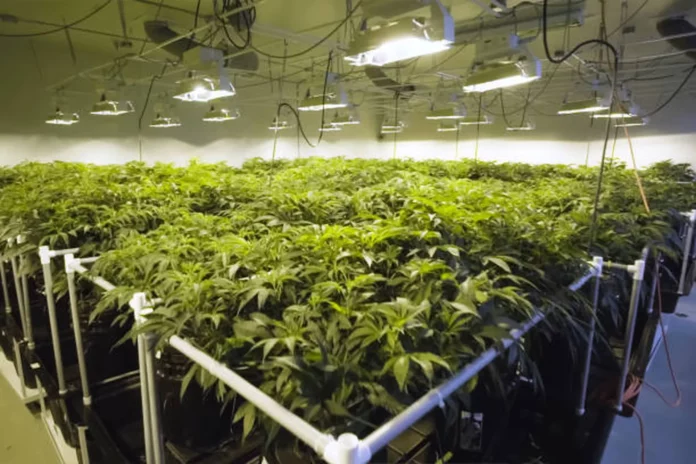Weed grow houses, also known as indoor cannabis cultivation facilities, have become synonymous with the modern cannabis industry. These highly controlled environments provide cultivators with the ability to create optimal conditions for cannabis growth, ensuring consistent quality and high yields. In this in-depth article, we delve into the world of weed grow houses, shedding light on their intricacies, advanced cultivation techniques, and the broader impact they have on the cannabis industry.
The Evolution of Weed Grow Houses
The concept of indoor cannabis cultivation has evolved dramatically over the years. From small-scale clandestine operations to large-scale, professionally managed facilities, the cultivation landscape has witnessed significant advancements. The emergence of legal cannabis markets has accelerated the development of sophisticated grow houses, combining state-of-the-art technology, scientific knowledge, and industry best practices.
Controlled Environments: The Key to Success
The primary advantage of grow houses lies in their ability to control every aspect of the growing environment. Factors such as temperature, humidity, lighting, air circulation, and nutrient delivery can be precisely tailored to the needs of the plants. Advanced HVAC systems, specialized lighting setups (LED, HPS, or a combination), and automated monitoring systems help maintain optimal conditions throughout the cultivation cycle, maximizing plant health and productivity.
Cultivation Techniques: Pushing the Boundaries
Weed grow houses employ various cultivation techniques to enhance plant growth, maximize yields, and manipulate desired traits. These techniques include high-yield training methods like Screen of Green (SCROG) or Sea of Green (SOG), hydroponics or aeroponics systems that deliver nutrients directly to the plant’s roots and advanced pruning and defoliation techniques to optimize light penetration and airflow.
Strain Selection and Breeding
Grow houses often focus on selecting and breeding cannabis strains to meet specific market demands. Cultivators prioritize traits such as potency, flavor, aroma, and disease resistance. Selective breeding techniques and genetic manipulation allow for the creation of unique strains with specific characteristics, catering to diverse consumer preferences. The relentless pursuit of genetic innovation contributes to the ever-expanding array of cannabis varieties available.
Energy Consumption and Sustainability
The indoor cultivation of cannabis comes with significant energy demands, primarily due to lighting, HVAC systems, and environmental controls. This high energy consumption raises concerns about environmental sustainability. However, industry leaders are increasingly adopting energy-efficient technologies, such as LED lighting and advanced HVAC systems, along with renewable energy sources, to minimize the carbon footprint of grow houses and promote sustainability.
Pest and Disease Management
Maintaining a pest- and disease-free environment is paramount in grow houses to protect the crop’s health and yield. Integrated Pest Management (IPM) practices are widely implemented, combining biological controls, such as predatory insects or beneficial microorganisms, with careful monitoring and early detection systems. Strict hygiene protocols, quarantine measures, and comprehensive sanitation practices help prevent the introduction and spread of pests and diseases.
Compliance and Regulatory Challenges
Operating a weed grow house entails navigating complex regulatory frameworks. Legal cannabis markets require adherence to stringent licensing requirements, security protocols, product quality standards, and comprehensive record-keeping. Compliance with local laws, safety regulations, and environmental regulations is critical to ensure a transparent, legal, and responsible operation.
Economic Impact and Job Creation
The growth of weed grow houses has had a significant economic impact, stimulating job creation and economic development. These facilities employ a diverse range of professionals, including cultivators, scientists, engineers, technicians, quality control experts, and administrative staff. Local communities can benefit from increased tax revenues and ancillary businesses that support the cultivation industry.
Future Prospects and Innovations
The evolution of weed grow houses shows no signs of slowing down. Advancements in technology, automation, and data analysis will further optimize cultivation processes and increase efficiency. Genetic research, precision breeding techniques, and the exploration of lesser-known cannabinoids and terpenes will continue to expand the boundaries of cannabis cultivation, unlocking new possibilities for therapeutic applications and consumer experiences.
Conclusion
Weed grow houses represent the pinnacle of indoor cannabis cultivation, combining cutting-edge technology, meticulous cultivation practices, and scientific expertise. These controlled environments provide cultivators with the tools to consistently produce high-quality cannabis while meeting market demands. As the industry continues to evolve, a delicate balance between innovation, sustainability, compliance, and social responsibility will shape the future of weed grow houses, ensuring a thriving and responsible cannabis industry for years to come.


